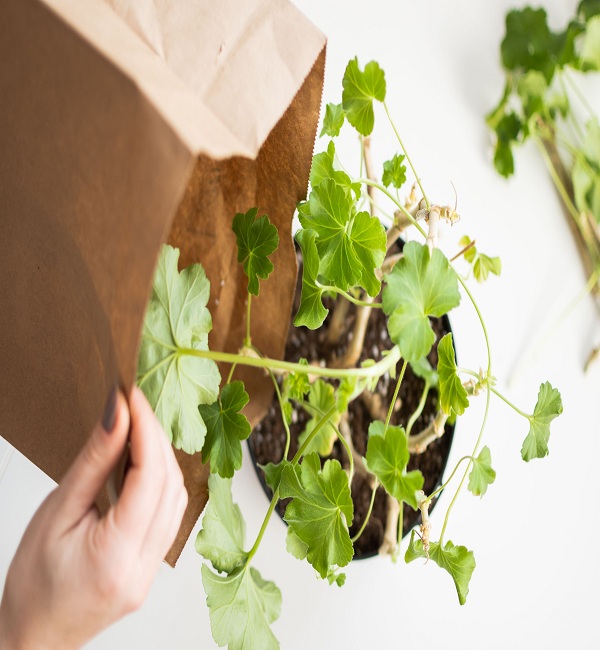When it comes to giving a splash of color in the spring, summer, and fall, geraniums are among the most sought after blooms. They are a true eye-catcher wherever they bloom because to their tall stalks, lush greenery, and densely packed petals. And boy, do they sprout up quickly!
Hardy geraniums and non-hardy geraniums are two different types. However, they are both perennials. In hardiness zones 3–8, hardy perennial geraniums can thrive outside all year long without any special care.
The non-hardy geraniums (Pelargonium hybrids) are the focus of today’s article. They are the most widely planted variety in pots, baskets, and flowerbeds.
These geraniums are also the ones that are frequently neglected as the growing season ends. But, as you’ll see below, it’s easy to keep non-hardy geraniums alive with just a little extra work.
So, here are some tips on how to save your geraniums and save a little money on your gardening budget for next year.
How to Save Geraniums Over Winter?
Avoiding a Crisis by Acting Now
The procedure of overwintering and saving non-hardy geraniums is remarkably similar to that of saving ferns. Similarly to rescuing ferns, the first step to protecting your geraniums from a hard frost or freeze is to take preventative measures as early as possible.
To begin, know that geraniums that aren’t hardy are highly vulnerable to frost. Water is abundant in the plants’ tissues, from the roots to the leaves and flowers. If that water freezes, it can mean the end of the line very quickly.
You should bring your geraniums inside before frost is forecast so they can survive. The sooner you do it, the less chance there is of damaging the plant’s roots and stems.

The Process
The good news is that you may save your geraniums in more than one way. How you choose to do this is determined by a number of factors, including the size of your garden, whether or not your plants were grown in flower beds and the size and placement of your containers. Let’s start with a quick look at geraniums in containers.
Saving Potted Plants
It may be easiest of all to save geraniums that are already grown in containers or hanging baskets. You can actually keep them alive as a houseplant if you provide them with plenty of space and bright light. In fact, they’ll keep blooming as long as they’re in optimal conditions.
When given enough light and warmth, geraniums can thrive indoors. Remove any wilted or diseased flower stalks or stems first. Keep the plant away from any drafts or heat vents and in a south-facing window. Water the soil when it gets dry, but don’t let it get too wet.
You can let your geraniums fall dormant and keep them in a dark, cool place if you don’t want to grow them as houseplants. To do this, first cut the plant so that it is around half its original size.

Find the Right Place for Your Plants
The next step is to choose a place where your plant may lie dormant while still being protected. We recommend a moist, cold basement as the ideal location. As long as the temperature does not drop below freezing, an unheated but insulated garage will do.
Put a brown paper bag over your plants to protect them. Neither plastic nor a sheet should be used. Brown paper bags let plants breathe while reducing their exposure to light. Before covering, make sure the soil is dry. If it is excessively wet, the plant may mold and die.
Every two to three weeks, inspect your geraniums to ensure sure the leaves aren’t falling off or drying out. If the soil is dry, sprinkle some water on the surface to help the plants out. When spring arrives, it’s OK to put your plants back outside or in a sheltered area so they can begin growing again.

Saving Geranium Bare Root Cuttings
It’s possible to save your geraniums in a third way that takes up even less room. Better still, you can save geraniums whether they are growing in containers or in the ground.
Early in the fall, pull up your geraniums or take them out of their container. After that, you need to brush away the dirt to reveal the naked roots. Leave all of the roots intact while chopping the top of the plant by half to two-thirds its size.
After that, you should put the plants in a large brown paper bag (a cardboard box will also do) and keep them in a cold, dark spot until you’re ready to use them again. Once again, the basement is frequently the most convenient location. Plants should be placed in the bag or box with their roots facing upward.
Just before spring arrives, put up your bare-root plants and set them in a bright room or on a windowsill. It’s important to use high-quality potting soil when relocating plants to new containers so that the roots can establish themselves and flourish. It’s also a good idea to apply a rooting hormone or booster to the roots so they can grow more quickly.
Bringing Plants Back In the Spring
Give the plants just enough water to keep their soil slightly damp. It will take a few weeks for new growth to become apparent. When spring arrives, you can either transplant the plants into the ground or let them continue growing in their containers.


